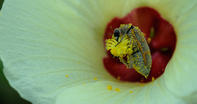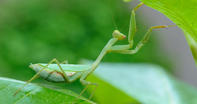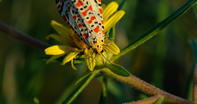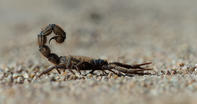An Important Role
The insects play an important role in the Richtersveld ecosystem as they contribute to the diet of many larger species, and they are also responsible for pollinating many of the plants.

As is usually the case, insects are the most numerous animals in terms of numbers, as well as species. Like the other animals that live here, the insects have developed several ways to thrive in the desert environment.
These survival strategies include: waxy body coatings that retain water, special chemical processes that produce internal moisture, and ingenious forms of camouflage that help them blend into the rocks. Some termite species are even known to bury up to 20 meters under the sand to find the water table. Several narrowly endemic species have also evolved hand-in-hand with specific endemic plants and are uniquely adapted to ‘fit’ these flowers.
Insect Groups

There are several groups of insects: the primary feeders (who eat plants and/or nectar), secondary feeders (who eat the primary feeders) and detritus feeders (who chase after organic bits and pieces blown around by the wind). Pollination is done largely by bees (notably carpenter bees), bee flies and pollen wasps (the variety of pollen wasps in the western part of southern Africa is among the highest in the world).
Other insect species include: milkweed locusts, tortoise beetles, blister beetles, monkey beetles, mouldy beetles, crickets, ground grasshoppers, stone grasshoppers, praying mantids, millipedes, centipedes, cicadas, flies and the like.
Butterflies and Bugs

Several unique butterfly species are also found here, including the Namaqua Arrowhead, a subspecies of the Boland Tholly, the Warrior silver spotted copper and the Roseate Emperor (actually a day-flying moth). Silverfish (also known as fishmoths) are present in the Richtersveld and the region is home to the largest diversity of these bugs in the world, including many endemic species.
Silverfish are interesting little critters: they are nocturnal, shed their skins, grow tiny scales, do not have a pupal or larval stage (so emerge fully formed from their eggs) and they absorb moisture through glands in their anus – which is quite a good trick, when you think about it. By the way, the common fishmoth (the one that eats your clothes) is not indigenous to South Africa.
The Bogeymen

Arachnids, the eight-legged bogeymen of the insect world, are well represented in the Richtersveld. These include the trapdoor spider, buck spoor spider, Sicarius spiders, the very toxic black button spider and sun spiders or Romans (including 4 species endemic to the Richtersveld).
Three families of scorpion are also found here, including ground scorpions, rock scorpions and thick-tailed scorpions (several species of which are among SA’s most poisonous). So, if you’re camping in the area, don’t forget to check your shoes in the morning!
By David Fleminger